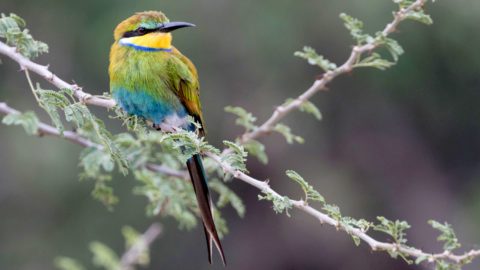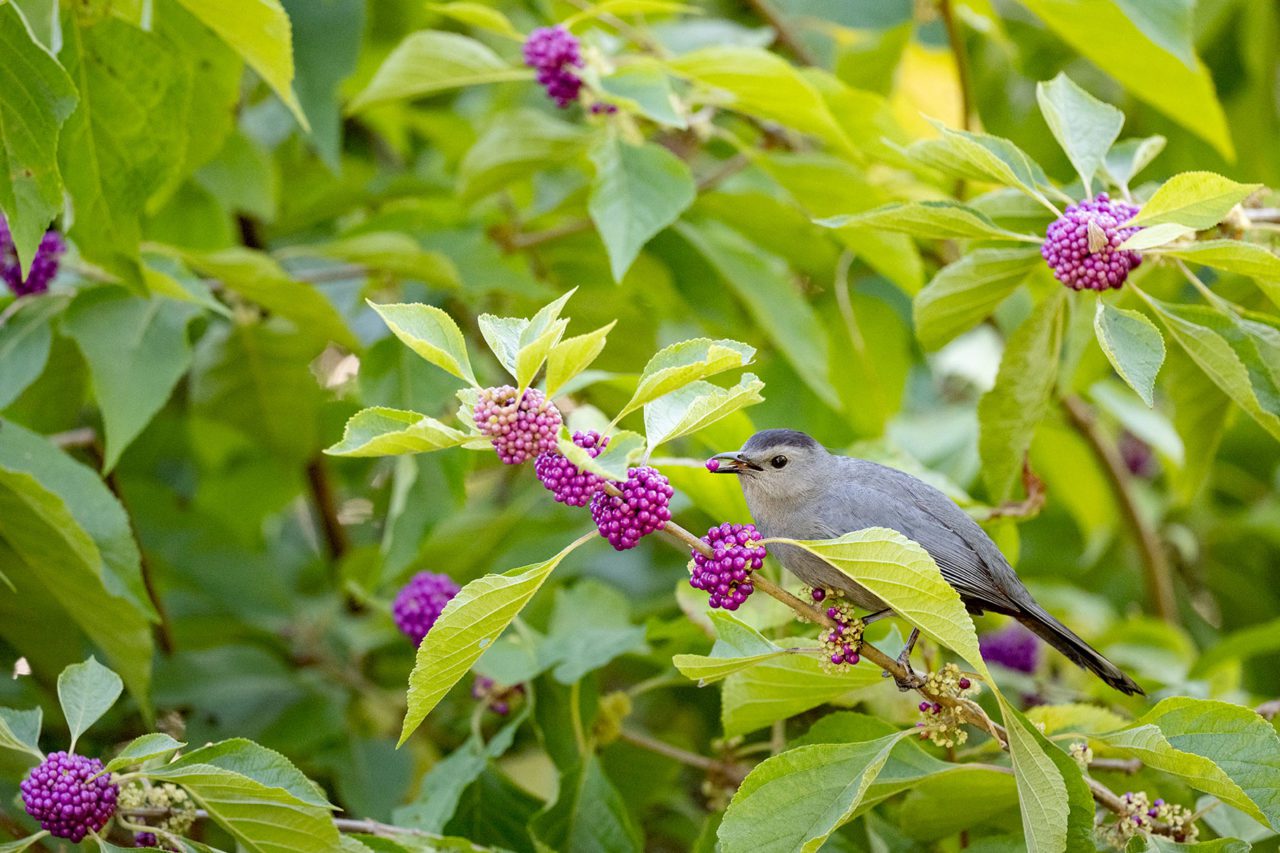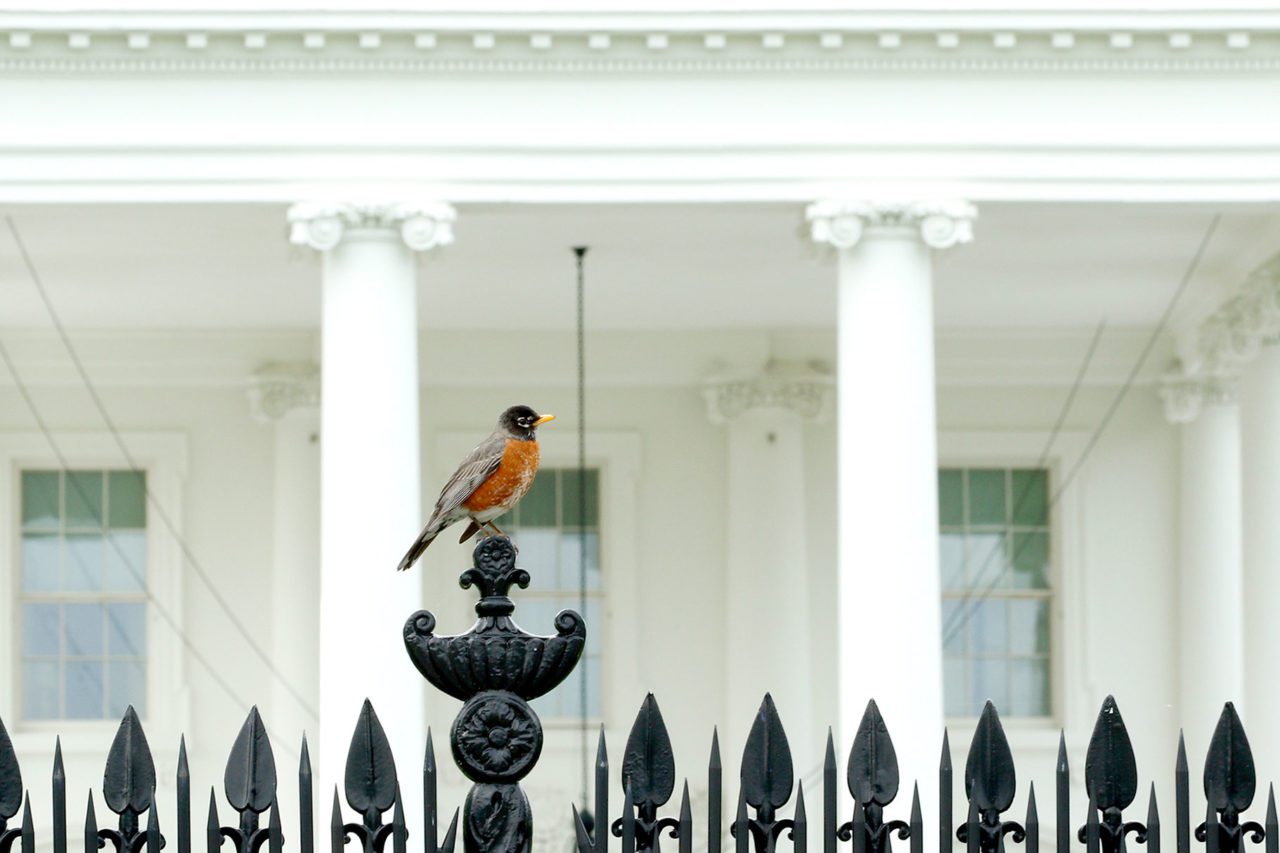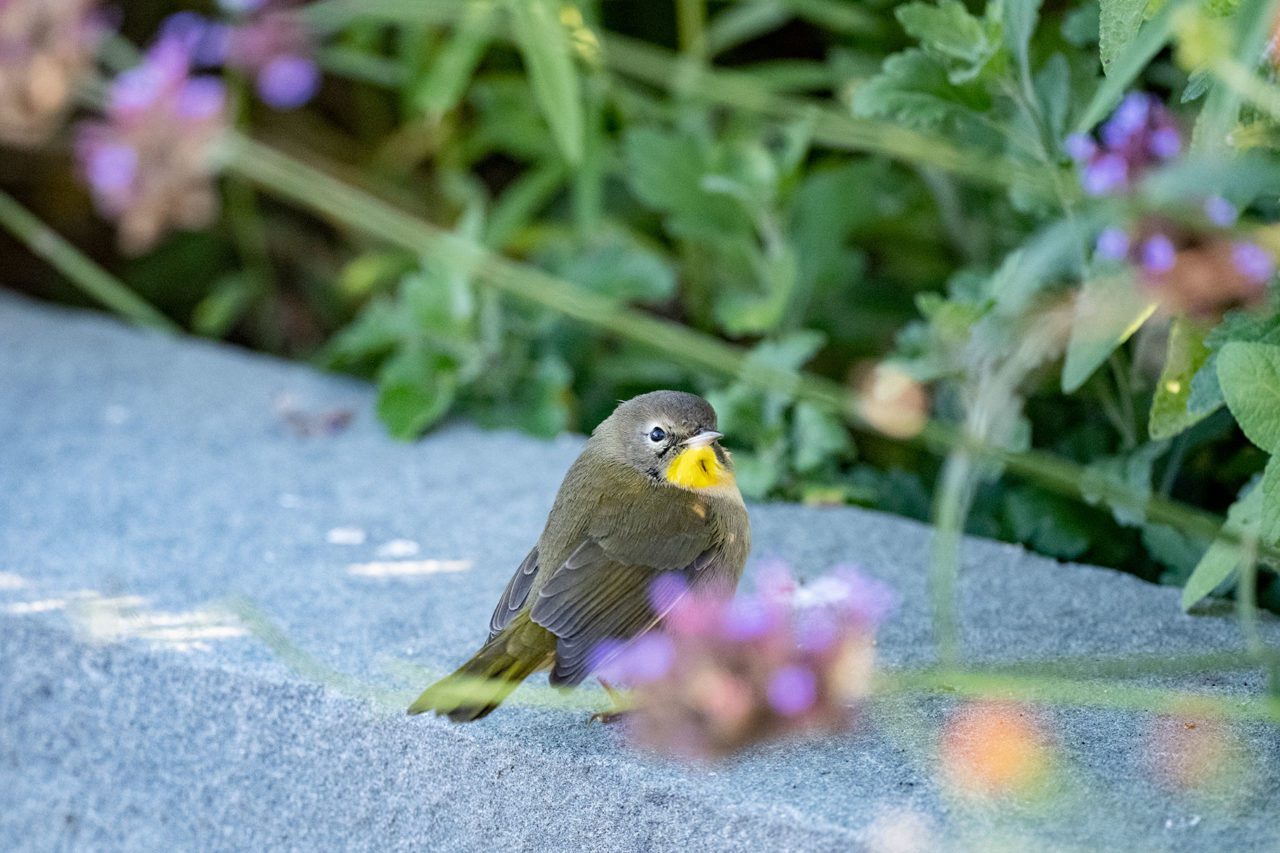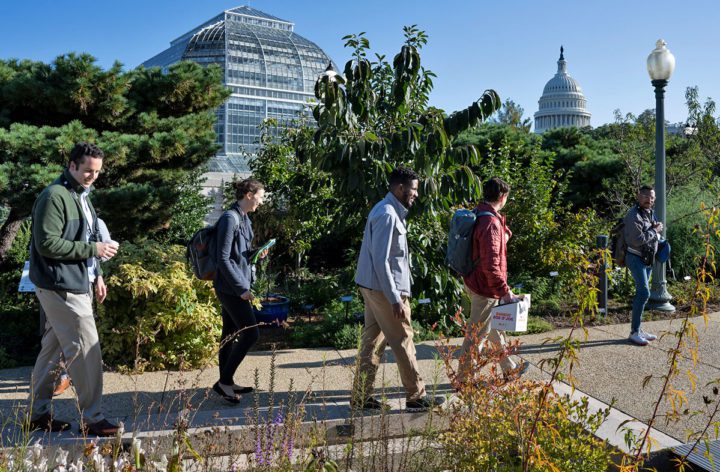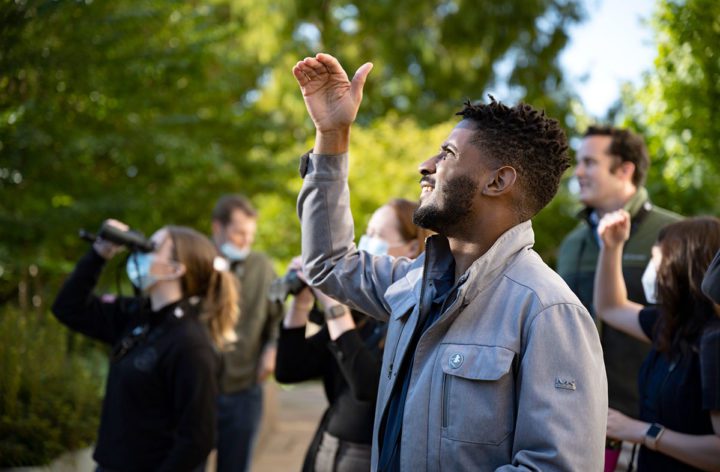On Capitol Hill, Bird Walks Help Politicians Find Common Ground
Since 2019, a series of monthly bird walks on Capitol Hill has offered a low-key way to put birds on the minds of Congress and provide common ground in a place that's more partisan than it's ever been.
Story by Ariel Wittenberg; photos by Chris Linder
December 21, 2021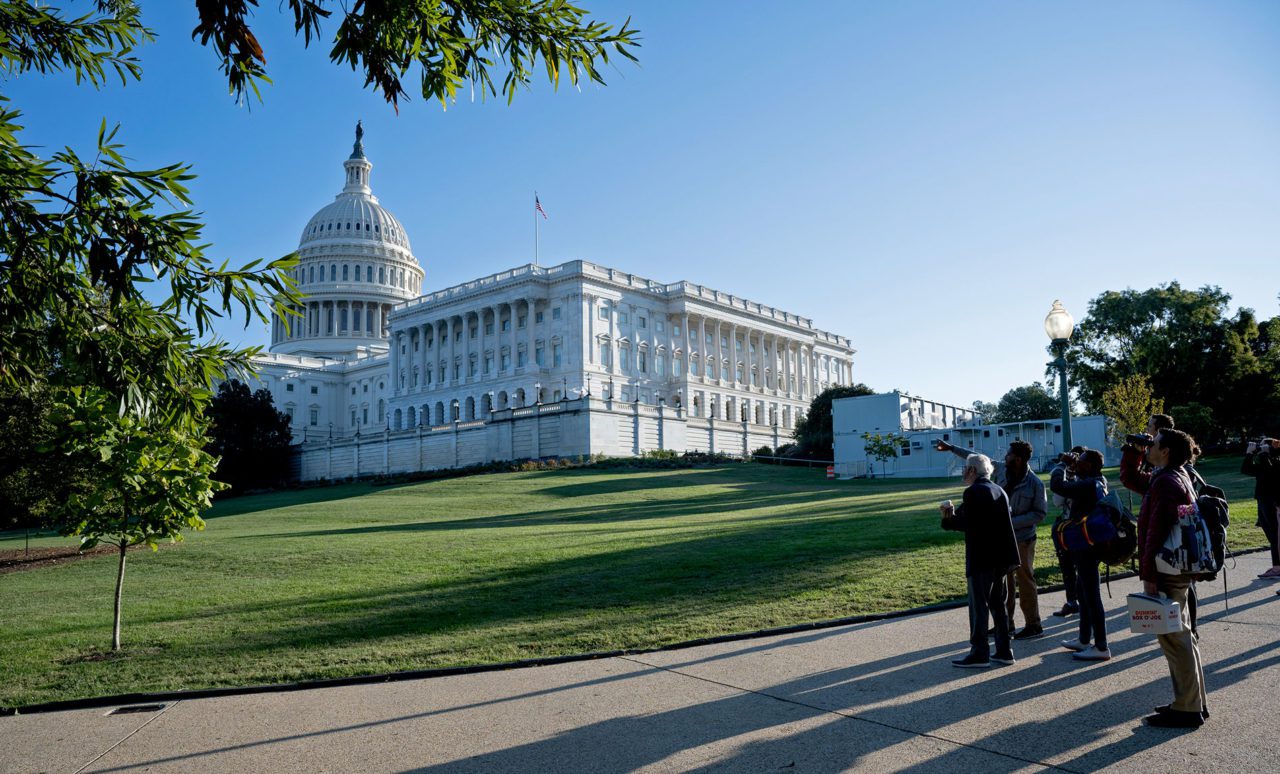
From the Winter 2022 issue of Living Bird magazine. Subscribe now.
It’s a busy morning on Capitol Hill when the gaggle of congressional staffers and their boss, U.S. Rep. Alan Lowenthal, gather on the back lawn.
At this moment in early October, Congress is locked in negotiations over the biggest-ever boost in federal funding to fight climate change. But this morning’s meeting isn’t about legislation in the House of Representatives. It’s about three visitors perched atop the chamber’s roof, backlit by the Capitol Dome’s soft gold glow.
“Will you look at that, House Sparrows sitting on the people’s House!” exclaims Tykee James, the government affairs coordinator for National Audubon Society, eliciting a muffled chuckle from the dozen legislative aides and interns assembled.
James often makes dad jokes as icebreakers on the bird walks he leads monthly for staffers from both Congressional chambers and political parties. He started the walks in 2019 as a way to forge connections with lawmakers and their staff who might work on bird-related legislation. But the coronavirus pandemic, and then Capitol Hill security concerns (when much of the National Mall was fenced off following the Jan. 6 riot), put the bird walks on a yearlong hiatus. Now the walks are back, and James says they serve another purpose: building common ground in a place that is perhaps more partisan now than it’s ever been.
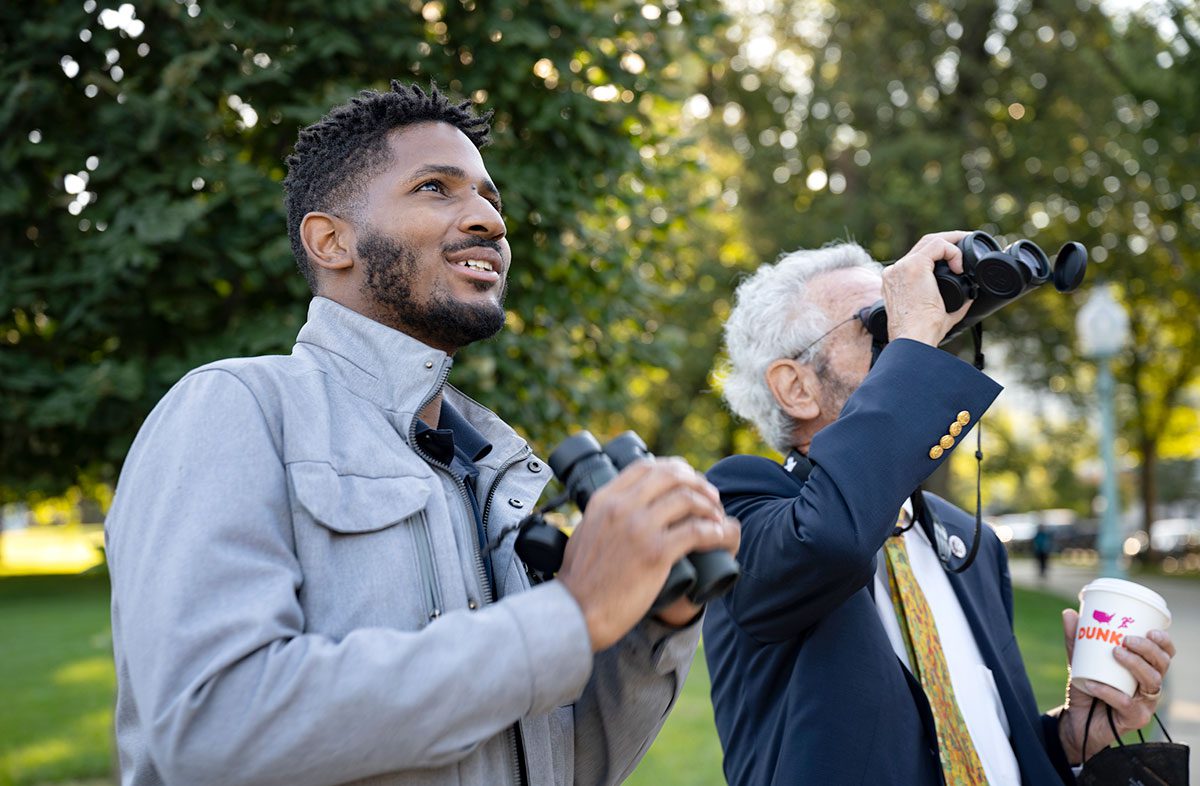
“If you take down the political barriers and you just bird a little bit, if you calm down, smell the flowers, and look for some feathers, then I think that you can genuinely find where people are coming from and that gives you a better opportunity to find where you can meet in the middle,” he says.
On this crisp October morning, James explicitly avoids talking politics: “I do no kind of lobbying on these walks.” Instead, he gives pointers on using binoculars, fields questions about the difference between male and female House Sparrows, and mimics the different caws of Fish Crows and American Crows.
It’s all part of a strategy.
“It’s not about me being an expert, it’s about me trying to find ways to connect people with the excitement of it all,” he says. “Being present for moments like this makes you feel connected to birds and to their issues.”
Congressman Lowenthal is no stranger to bird policy. He (a California Democrat) joined with Rep. Brian Fitzpatrick (a Pennsylvania Republican) to coauthor the Migratory Bird Protection Act that’s being considered in the 117th Congress. The Act would permanently codify protections for migratory birds that were rolled back during the Trump Administration (but recently reinstated by President Biden). Reps. Lowenthal and Fitzpatrick have also reintroduced legislation calling for the U.S. to join the Agreement on the Conservation of Albatrosses and Petrels, a conservation treaty that covers 31 species of seabirds.
But this is Lowenthal’s “first bird walk,” he says, and he is genuinely surprised when James tells him that American Robins aren’t actually robins at all, but a type of thrush.
“Where are the robins, then?” Lowenthal asks.
“They are in Europe,” James says.
To Lowenthal, participating in a bird walk is a means to escape the grind of the Capitol, where later in the day he will pay his respects to victims of the Covid-19 pandemic at a ceremony near the Washington Monument before returning to the House chamber for more debate on spending bills.

A Gray Catbird was one of 20 species within three blocks of the Capitol that was spotted on one of James’ bird walks. 
The common name “robin” has been applied to many songbird species around the world, including American Robin (family Turdidae), European Robin (family Muscicapidae), and more than 40 species in New Zealand, Australia, and Oceania (family Petroicidae). American Robin by Greg Bodker/Macaulay Library. 
On the late October bird walk, many congressional staffers saw their first Common Yellowthroat.
“There is so much going on, so much uncertainty and stress,” Lowenthal says. “It’s nice to have a focus outside of ourselves.”
Even though he doesn’t talk politics on his bird walks, James believes they do have policy impact. For example, the legislative director at Lowenthal’s office, Shane Trimmer, has been on almost every bird walk James has offered. And James says that he “suspects” some cosponsors of Lowenthal’s bipartisan migratory bird legislation may have been inspired by the walks.
“When you’re on the walk with staffers, you hear from people who are like, ‘Oh, this is so cool, and there’s a bipartisan bill about this I could probably get my boss to sign onto,’ without any direct ask from us at Audubon,” James says.
Today’s bird walk is full of first-timers. One aide from Long Beach, California, tells James he is only experienced at “identifying pigeons and seagulls,” and another confesses she has “absolutely no birding experience.”
“Well, you have today!” James replies cheerfully.
James says he actually prefers to bird with people “who are picking up the bins [binoculars] for the first time,” those with whom he can “share the excitement of ‘What is that?’” It’s one reason he loves the congressional bird walks.
“It’s all about meeting people where they are with the birds,” he says.
That, and James hopes observing birds can help staffers and politicians think about their own environments in new ways. That was the case for James, when he started birdwatching during his first job out of college at the Cobbs Creek Environmental Center in West Philadelphia.
“Birding was just a way for me to see the issues of the park where I lived. I could walk through a park and go birdwatching, and on one side see streetlights, park benches, and trash cans, and on the other side I wouldn’t,” he says. “And then you start to ask questions and … it turns out it’s about funding for parks, and that’s something that’s really important for every community to have access to.”

On the late October bird walk, congressional staffers saw their first Common Yellowthroat, among some 20 species seen in total. 
Tykee James says he loves to get first-time birders on his Capitol Hill bird walks so he can share in their excitement of seeing a bird and asking “What is that?”
People of color in the United States are less likely to have adequate access to parks and green space. Lack of green space in communities of color often means those neighborhoods of mostly concrete feel hotter than areas with parks and ample tree cover. The phenomenon, called the heat island effect, can exacerbate health disparities because high temperatures can lead to heat exhaustion and stress, which complicate heart and respiratory conditions.
The lack of access to green space is no accident, James notes, due to historic discriminatory mortgage lending and other practices that segregated neighborhoods. That’s one reason why, outside of his day job, James advocates for increasing diversity within the outdoors community. Last year, he cofounded Black Birders Week to promote the work of Black naturalists and raise the visibility of Black people within the birding community.
“Black heritage in the outdoors is stolen heritage,” he says. “Representation in the outdoor community is an outcome of inequitable policies at the city, state, and federal levels that have excluded our communities.”
Increasing equity in birding means helping all people understand that even urban parks are connected to a greater ecosystem. James hopes that notion comes across this morning, when Lowenthal and his staffers will spot some 20 species within a three-block radius of the Capitol building, including a Ruby-crowned Kinglet stopping by the National Botanical Garden on its autumn migration to Mexico. The staffers also spot a Yellow-rumped Warbler pecking at the garden’s gravel path, a bird James affectionately describes as a “butterbutt.”
“When we do these bird walks every month, we see the birds through the year and you get connected to the fact that the whole life cycle of the bird is happening right in front of you,” he says. “You don’t have to go to Colombia to see it, you don’t have to go to British Columbia to see it, you can be here in the District of Columbia.”
Ariel Wittenberg is the public health reporter for E&E News, an energy and environment news service based in Washington, D.C.
Chris Linder is a senior fellow in the International League of Conservation Photographers and expedition multimedia specialist at the Woods Hole Oceanographic Institution.

All About Birds
is a free resource
Available for everyone,
funded by donors like you
American Kestrel by Blair Dudeck / Macaulay Library
